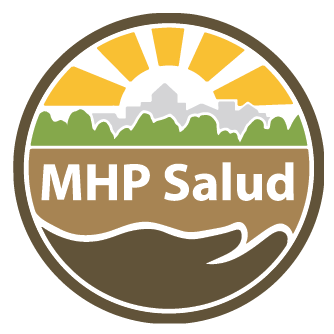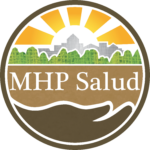Disease Prevention and Management: Diabetes
MHP Salud’s Healthy Living initiative provides accessible support and education to community residents so that they can live healthier lives.
Diabetes in America
Over 30 million Americans have diabetes, and 25% are unaware of their diagnosis. In the past 20 years, the number of adults with diabetes has tripled and is likely to rise. More than 1 in 3 adults have prediabetes, 90% of whom are unaware of their diagnosis. Prediabetes increases the risk of developing type 2 diabetes, heart disease, and stroke.1 According to a report published by the American Diabetes Association in 2017, care for individuals with diabetes accounts for 1 in 4 of healthcare dollars spent in the U.S.2 People with diagnosed diabetes have, on average, 2.3 times higher medical expenditure than people without a diagnosis.3
Diabetes can cause a serious reduction in quality of life, especially if left untreated. Although the disease can cause a variety of symptoms, complications from untreated diabetes are very serious and can include irreparable damage to vital organs such as the heart or kidneys. In order to manage the disease, careful attention needs to be paid to managing blood sugar levels through careful diet management, medication, and regular check-ups with a physician. Because of this, programs that address diabetes and seek to help people manage their diabetes are vitally important.
According to the CDC, chronic disease is the leading cause of death and disability in the United States. Diabetes is the number one cause of kidney failure, lower limb amputations, and adult-onset blindness.4
Community Health Workers (CHWs) who provide support and education to community members to promote good health.
Community Health Workers and Diabetes Management
These initiatives address the high burden of diabetes in the Latino and Hispanic community through prevention and chronic disease management education activities.
Latinos have a higher prevalence of diabetes and obesity, and fewer Latinos have controlled blood pressure. They have higher rates of end-stage renal disease, caused by diabetes, and they are 40% more likely to die from diabetes as non-Hispanic whites.5 It is estimated that racial and ethnic minorities receive poorer care than whites on 40% of quality measures, including chronic care coordination and patient-centered care.6 Community Health Workers are especially effective at addressing this disparity. In particular, they make valuable members of a clinical care team, as they can help improve care coordination by overcoming potential linguistic or cultural barriers that the team may face when treating community members.
Many of our diabetes management programs focus on community-based educational classes. These classes are led by a Community Health Worker, who provides educational instruction on how community members can manage their diabetes and maintain a healthy lifestyle. Group discussion and questions are encouraged. Community Health Workers make particularly effective group leaders, as they are seen as both peers and professionals, and can build a trusting relationship with participants that may not otherwise be possible. As Community Health Workers are able to understand and culturally identify with the communities of program participants, they are well suited to provide appropriate recommendations that participants will be receptive to, as well as be able to implement based on their available resources and food options.
Community Health Workers also conduct home visits and speak one-on-one with participants on the importance of proper nutrition, physical exercise, and disease management. Sometimes, participants may need services that go beyond the scope of the Community Health Worker, because of this, we often partner with local clinics and providers. The Community Health Worker also assists the participant in accessing these needed services.
Outcomes
After 12 weeks of case management, our participants reported a significant increase of nearly 25% or higher in healthy behaviors such as eating more fruits (24.3% increase) and vegetables (28.5% increase) and at least 30 minutes of physical activity (31% increase). Further, the average HgbAB1c, the standard for glycemic control, trended in a positive direction after 3 months.
One such project under this initiative, Salud y Vida, worked with adult participants who were experiencing uncontrolled diabetes. CHWs provided Diabetes Self Management Education (DSME) and participants received additional services and case management from a variety of healthcare professionals and agencies. At baseline, the average A1c of participants was 10.07 , by 3 months the average dropped to 9.17, a decrease of 8.9%. At 12 months at the conclusion of the program, the average A1c level increased slightly to an average of 9.31, but still remained below the initial baseline average -illustrating the lasting impact an initiative can have beyond long after its completion.
- https://www.cdc.gov/diabetes/basics/diabetes.html
- http://care.diabetesjournals.org/content/early/2018/03/20/dci18-0007
- http://care.diabetesjournals.org/content/early/2018/03/20/dci18-0007
- https://www.cdc.gov/diabetes/basics/diabetes.html
- https://www.cdc.gov/vitalsigns/hispanic-health/index.html
- https://www.ahrq.gov/research/findings/nhqrdr/nhqdr16/quality.html
Want more information on this initiative? Please contact us at info@mhpsalud.org
About MHP Salud
MHP Salud has over thirty years of experience implementing CHW programs and training organizations looking to start and/or strengthen their own CHW programs. For more information about MHP Salud, our services, and how we can help you, please email us at info@mhpsalud.org


